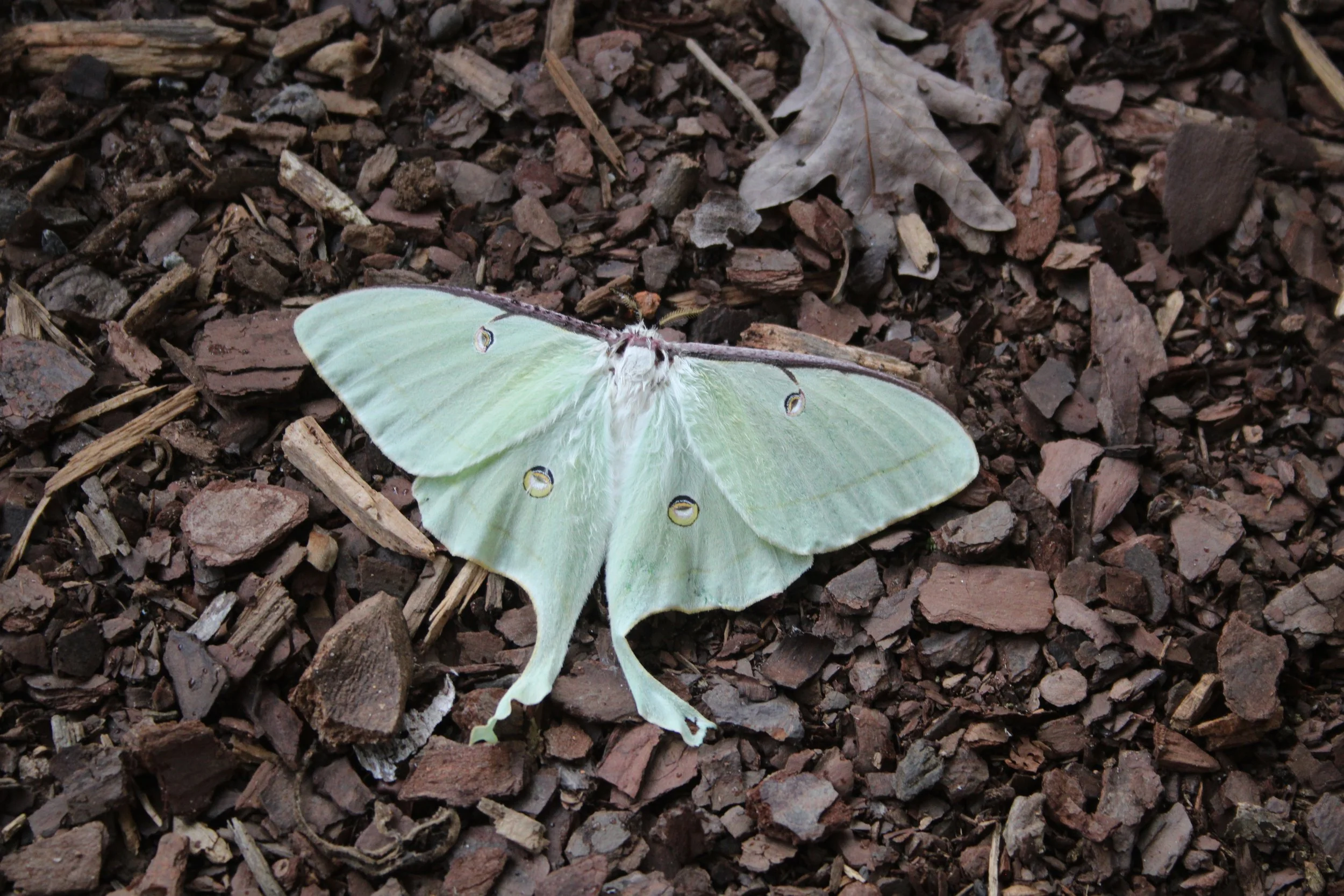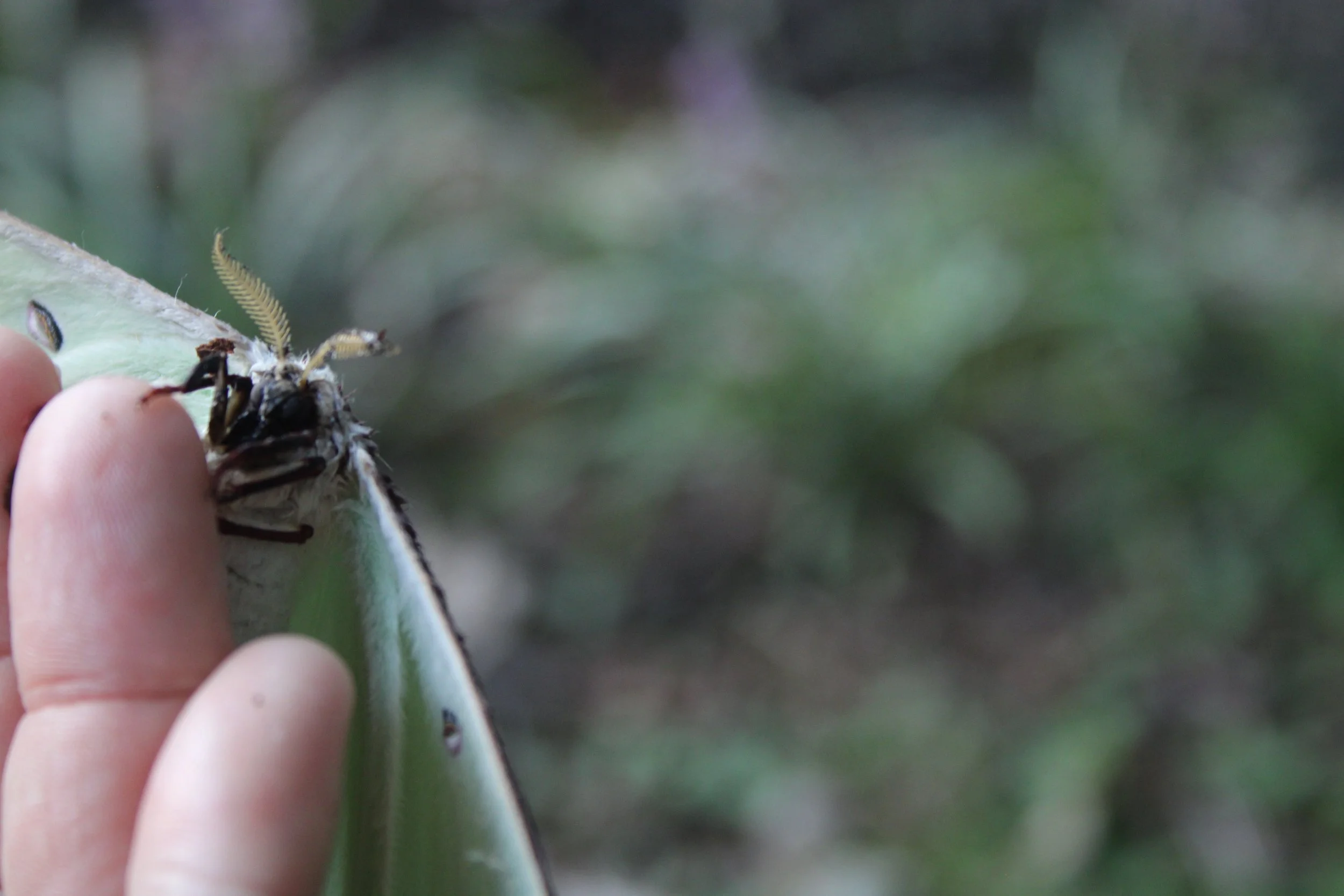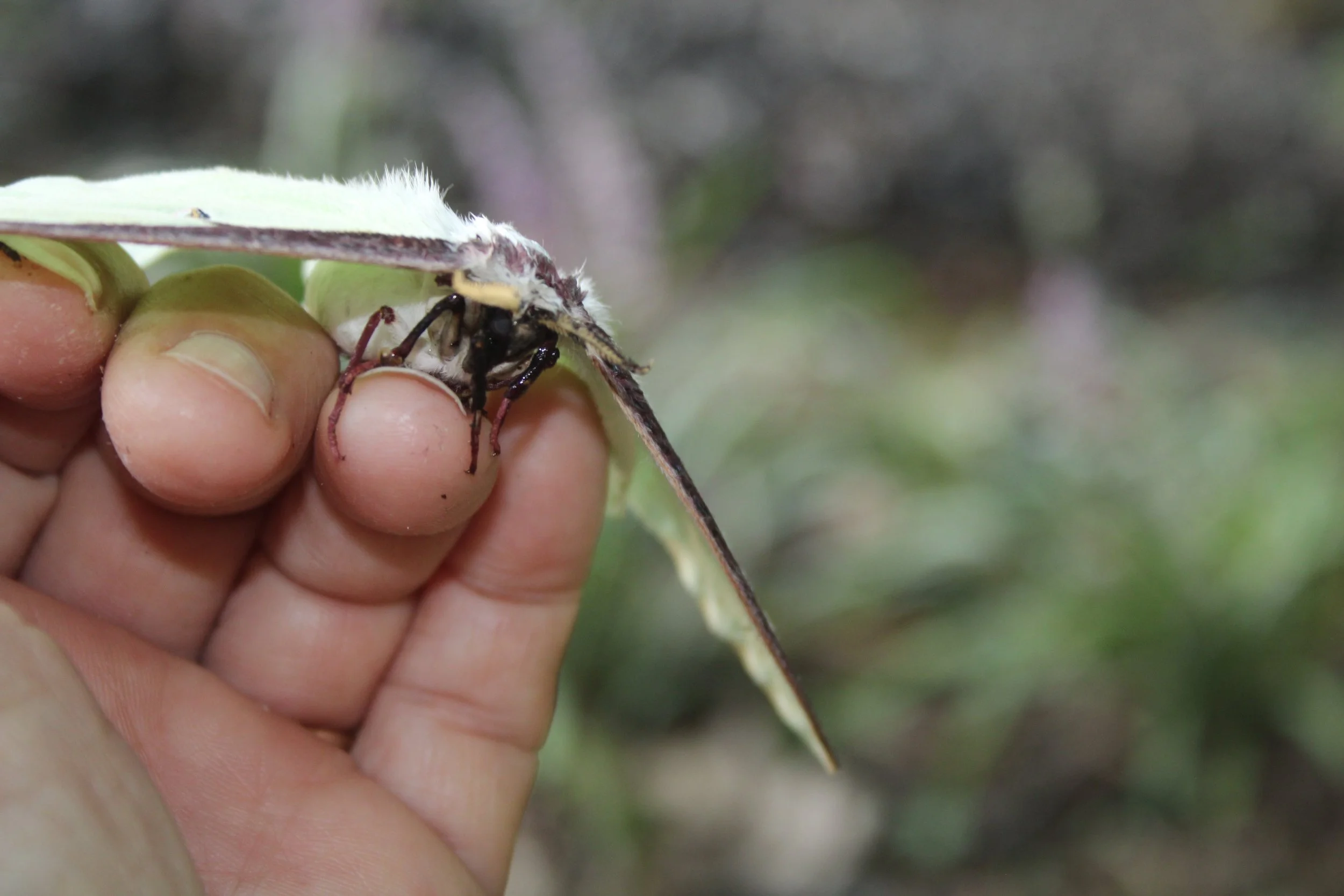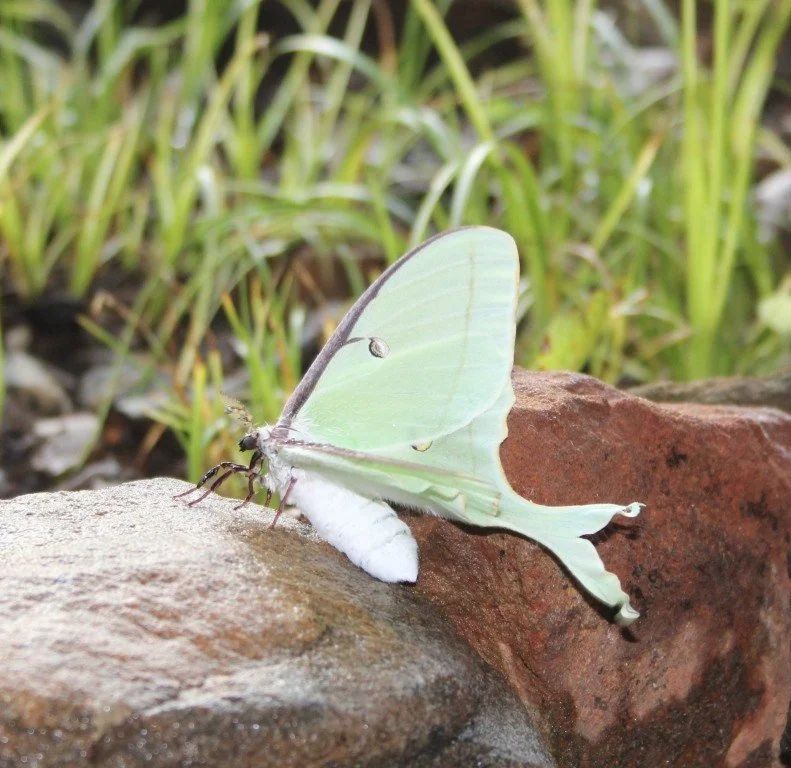After thirty-plus days of ninety degrees or more, my area of the southeast has enjoyed plentiful rains and unusually cool, fall-like temperatures. My brown lawn has turned green, almost overnight. Annuals and perennials are renewed, pushing out new flowers and fresh leaves. Bees and butterflies cover the butterfly bushes and Joe Pye Weed, while hummingbirds are zooming from plant to plant. Yesterday, I spotted a Luna moth. These large, pale green moths are rare. I decided to research their preferred plant foods so that I could add more to next year’s garden. That is when I made a sad, sad discovery. Luna moths are “born” (emerge from their chrysalis) without a working mouth or digestive system. They cannot eat. Instead, they breed, lay eggs, and die of starvation within a week.
Luna moths are among the largest in North America, with a wingspan up to four inches. They are found in or near deciduous forests of hickory, beech, and birch trees. Lunas have a complete metamorphosis, going from eggs to larvae (caterpillar) to pupa (chrysalis) to adult. Luna caterpillars go through five growth stages, called instars, gaining in size with each stage. Then they form a pupa encased in a protective cocoon. The adult emerges from the cocoon.The entire lifespan, egg to death, may take a few weeks in warm areas or last up to a year in cold areas. In the south, there may be two (rarely, three) generations per year. In the cooler northern zones, there is one generation per year.
From these photos, you can see that Luna moths have large, fuzzy bodies that must look like a taste treat to predators. The adults’ only means of protection is its lovely green color, which blends in with surrounding leaves. The streaks and spots on their wings may appear twig-like to an insectivore looking for a meal. The caterpillars have an assertive way of fending off predators. When they sense a threat, they rear up and make a clicking sound. If that doesn’t work, they vomit a foul-smelling liquid. What a way to protect oneself!
Adult Luna moths blend in so well with leaves and tree bark, the only time humans are likely to see them is when they are attracted by artificial lighting to alight on door frames or siding. Unlike butterflies, which have skinny antennae with bulbous ends, moths have feather-like antennae. If you are fortunate enough to see one, take time to admire their delicate, fleeting beauty.




To end this blog on a positive note, I am including a short video of Eastern Swallowtail butterflies on my butterfly bushes. These are Buddleia ‘Pugster’ cultivar, a dwarf sterile form I have grown for four years now. They have not outgrown their labeled size, which is a big plus. Their sterility means I don’t worry about them spreading into unwanted areas.
A second positive thing: By now, we all know that Burning Bush, Euonymus alatus, is invasive. Proven Winners™ has released a seedless form, Fire Ball Seedless® so we can continue to enjoy Burning Bush’s wonderful red fall foliage without guilt.
Swallowtail butterflies on butterfly bush
